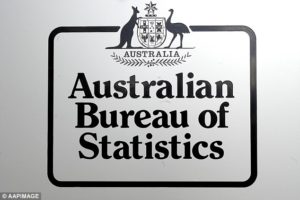Census data shows how we move, work and study
 A broader picture of Australia’s diversity, population dynamics and multiculturalism is emerging as more of the 2016 Census data is analysed.
A broader picture of Australia’s diversity, population dynamics and multiculturalism is emerging as more of the 2016 Census data is analysed.
Australians are the most welcoming people on earth when it comes to migrants with more than six million, or more than a quarter, of us born overseas, the census shows.
If you add the proportion of people who have at least one parent born overseas the figure for the major cities of Melbourne and Sydney is more than 60 per cent and around 50 per cent nationally.
To understand these figures, you just have to look at Germany where there is a national outcry when the migrant populations tops 15 per cent and at Paris where there were demonstrations when it briefly rose above 20 per cent.
In Tokyo less than 2 per cent of the population is foreign born and in Shanghai it is close to zero.
The census revealed that there are less than 13,000 Australians still living who migrated here before the end of WWII.
Most of the current cohort of migrants arrived before 2006, including our largest inflow which occurred in the late 1960s.
In 1960s British migrants came in large numbers as the so-called ‘ten pound poms’ with 1969 being the peak of the British influx. More than 36,000 people who came to Australia from the UK in 1969 are still living here.
The inflow of Italian migrants peaked at about 10,000 in 1956 and the Greek inflow in 1964 at around 7,000.
The census analysis shows arrivals from India peaked in 2008 at 43,000 and at its peak Chinese migration saw 46,000 come in 2015 – the largest intake ever or a single nationality in a single year.
According to demographer Bernard Salt, Australia’s peak immigration waves amount to an Anglo-European intake in the 1950s and 60s and indo-Chinese wave in the decade since 2006.
Mr Salt said more established migrants are now widely dispersed across metropolitan areas while more newly arrived migrants tend to congregate within specific suburbs.
The second wave of census data, released on October 23, also shows that Melbourne is seeing a large influx of people from overseas and interstate.
Melbourne gained 485,220 extra residents in the five years up to last year’s census. Most (365,240) came from overseas while (27,670) came from Sydney. More than 17,000 people moved from Brisbane to Melbourne.
Meanwhile a record 76,210 Melburnians moved to regional or rural Victoria in the five years up to the census – 24 thousand more than the 52,220 regional Victorians who moved to the city.
The data paints a picture of a city that attracts immigrants from overseas and other states who are displacing locals opting for sea or tree-changes.
Other highlights of the second wave of census data include the ‘health and social assistance’ emerging as the sector employing the largest number of people with 1.35 million, followed by ‘retail trade’ with 1.05 million, ‘education and training’ with 925,000, ‘construction’ with 911,00, ‘science and technology’ with 776,000 and ‘hospitality’ with 738,000.
Tellingly, ‘manufacturing’ is the eighth largest employer with just 683,000 people working in the sector.
The census reveals the proportion of Australia with university degrees has tripled over the past 25 years.
Almost a quarter of Australians have completed a bachelor degree or higher, compared to just 8 per cent in 1991.
Laurie Nowell
AMES Australia Senior Journalist












